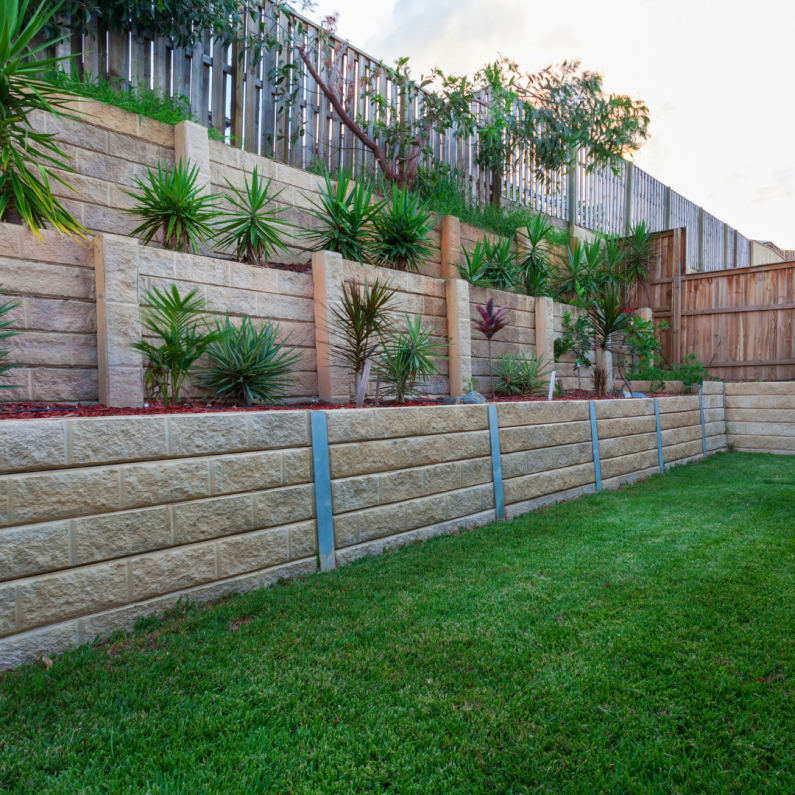Dry-set stones offer a fantastic method to introduce texture and visual allure to the exterior of your home. Installation is relatively straightforward, requiring only a wheelbarrow, masonry cement, and a bucket of specially washed, dry river rock.
A dry-set stone wall holds significance in various projects. Historically, these stones were commonly employed around gardens or in landscaping works. Even today, many homeowners construct these walls on their lawns. And for that, they often collaborate with a St. Charles landscaper or similar local professionals nearby who have the expertise in building these landscaping elements.
What is a dry-set stone wall?
Dry-set stone walls have a much different look than traditional masonry walls. In places where traditional building techniques are impossible (such as on steep mountainsides or in rocky terrain), this type of wall provides an attractive alternative to traditional construction. This type of masonry uses a system of mortarless blocks that interlock together without the need for traditional masonry mortar.
The dry-set stones are stones, gravel, sand, or wood that are stacked up and mortared together in a certain pattern. The stones are usually stacked on a board (or a wooden frame), and mortar is applied between the stones. The mortar dries out as it is curing, and when the mortar is dry, the stones and the board are separated. This is the most common type of stone setting, and the dry-set wall can be used for decorative and protective purposes.
A dry-set stone wall is as it sounds: a wall constructed entirely of stone. The dry-set method uses no mortar to bind the stone and only cement to hold the stones together. The result is a stronger, more durable wall that needs less maintenance than other styles of stonewalling. This construction method is commonly found in older homes, where wood is in short supply. There are many professionals today though, similar to CKC Landscaping & Hardscaping, that specialize in restoring such structures in a home, which makes it convenient for homeowners as they get to keep the stone instead of building a new wall from scratch. The dry-set construction method is also well suited to climates where freezing or thawing is common since the wall is less likely to shift and crack during freezing and thawing cycles.
How to create a dry-set stone wall?
Creating a dry-set stone wall requires two materials: mortar and stone. The mortar will be the glue between the stone, which is critical in making the stones stick together. Typically, a mortar is a blend of sand, lime, and cement, but you can also use epoxy or tile adhesive. As for stone selection, you can use earth stones with a strong presence of grays and browns, which you can source from a contractor stone supplier near you.
Now that you know what you need, forming a dry-set stone wall can be easier than you think. First of all, you need a viable wall. The wall does not need to be load-bearing, but using the wall as a backdrop for the stone will help immensely. A dry-set stone wall is heavier than a mortar stone, so a good foundation is important. When preparing the stones, remove any dirt, dust, or debris. If the wall is load-bearing, use a base course of concrete or leveling for adequate support.
Keep in mind that this could be a challenging task to undertake if you’re inexperienced. You may be better off calling in experts who have a C-9 or drywall license. This way, you could rest assured that the dry-set stone wall will be constructed with the highest level of expertise and structural integrity, meeting all safety and quality standards.
What are the materials for making a dry-set stone wall?
Dry-set stone walls are made of natural stones, sand, and used mortar. You need a stone of about 3 inches (or 7 cm) wide, sand of about 1 – 2 inches (or 2 – 5 cm), and mortar material that is about 3/8 inches (or 2 cm) thick. You can mix your mortar, but it is best to get already mixed mortar.
For a do-it-yourselfer, a stone wall is an attractive and low-maintenance way to add decoration and structure to a garden. For a professional landscaper, a stone wall is, well, professional. It can be complex and beautiful or simple and functional. Building a stone wall requires careful measurements, a good foundation, and plenty of hard work. But, the finished result is worth it.
In conclusion, dry-set stone walls will last a lifetime and work well for retaining walls and hedges. You can use your garden hose as a saw, brush, and trowel. “We recommend a hard-packed, level area at least 18 inches deep,” says Moore. “If the ground is hard and dry, you can dig to 24 inches. But if there are roots, waterlogged, or soft soil, you should dig 30 inches.” Before you begin, Moore recommends marking out the wall with a garden hose.

